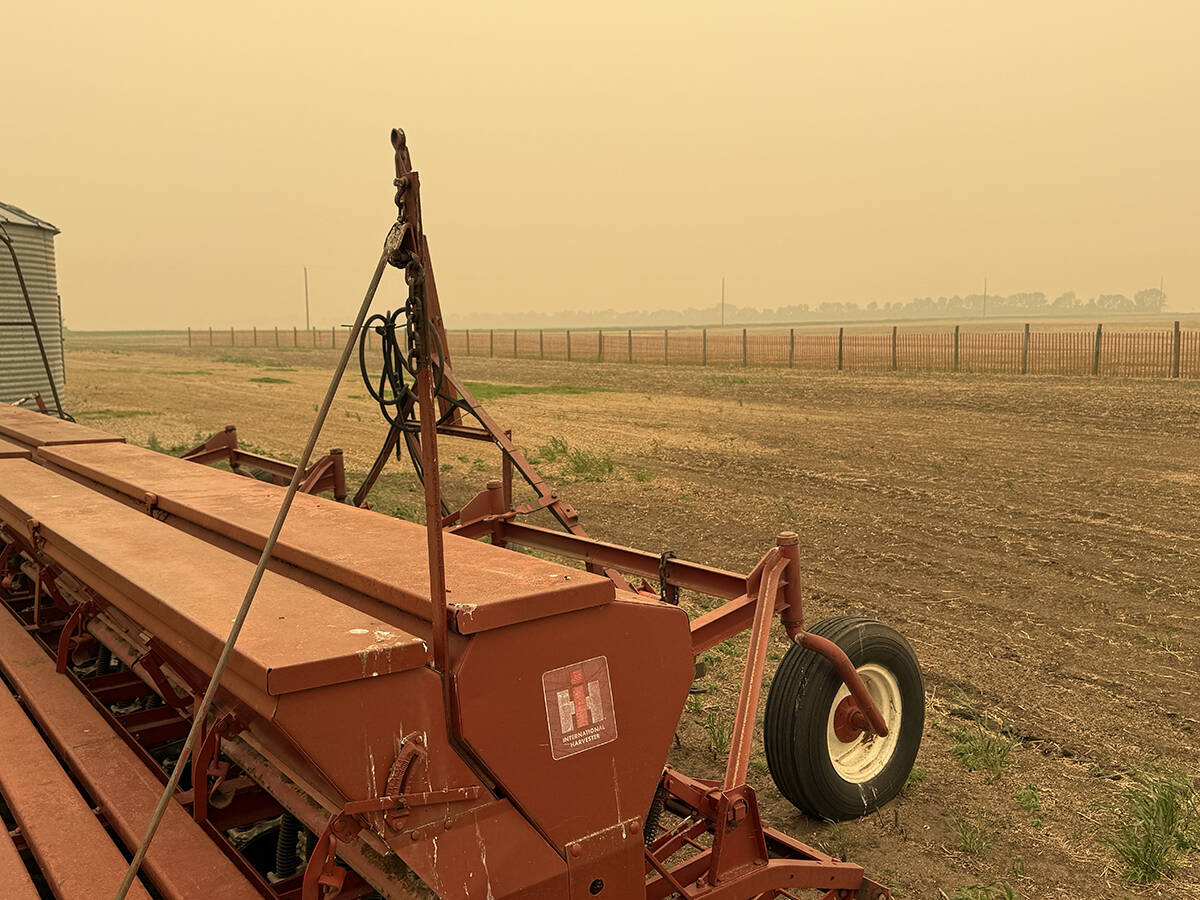The name sounds space-age, technological, scientific.
But, as it turns out, the name of Monsanto’s new, improved Roundup comes from the minds of marketers, who ran it by about 500 farmers before putting it on jugs, flyers and brochures.
It’s a name farmers are likely to hear a lot this spring as the chemical company launches the first major change in 20 years to what it calls the world’s most successful herbicide.
Monsanto launched Roundup Transorb in Canada last week, and already predicts this year it will outsell the original product by more than double.
Read Also

Wildfires have unexpected upside this year
One farmer feels smoke from nearby wildfires shrouded the July skies and protected his crop from the sun’s burning rays, resulting in more seeds per pod and more pods per plant.
On his farm in southwestern Manitoba, Ed Phillips said he didn’t really care what they named the new Roundup.
“I guess it’s all right,” said Phillips, who counts on using 2,500 to 3,000 litres of Roundup per year for his zero-till operation at Hartney.
“To me, it’s just a name.”
What Phillips wants to know is whether it will do a better job killing the Canada thistle in his fields.
“If it works there (on the thistles), then it’s definitely worth it.”
He received a pamphlet about Transorb in the mail a couple of weeks ago, and sent away for more information.
“It’s better absorption, better uptake of the product, is what I’m reading,” he said.
He figures he’ll pay the extra 80 cents per litre to try it out on his farm this spring, comparing it side-by-side with the original Roundup.
Will be popular
Perry Aulie, Monsanto’s product manager for Transorb, said his market research shows farmers such as Phillips who use Roundup will likely try the new kind on seven of 10 fields this spring.
It will cost $9.79 per litre, compared to $8.99 for the original version. But Aulie said farmers surveyed are looking forward to the flexibility of Transorb.
Farmers will be able to seed on the same day they spray. And Transorb is rainfast within an hour, meaning farmers won’t have to quit spraying six hours before they think it’s going to rain.
Aulie said Transorb contains 360 grams per litre of glyphosate compared to the 356 grams in the original Roundup.
But the trade secret of the new product is the “Transorb technology,” a unique set of ingredients that help more of the herbicide get into the weed to kill it.
Research manager Mark Lawton said the company tested Transorb for two years in fields across Canada.
Lawton said trials showed Transorb controlled 94 percent of wild oats when applied at a half-litre per acre, and 90 percent of quackgrass when applied at one litre per acre.
It’s 10 percent more rainfast than the original Roundup, and 17 percent more rainfast than Touchdown Rely, another glyphosate herbicide. Lawton also said it’s the most consistent product on the market.
Monsanto hired Chris Hall, a weed scientist at the University of Guelph, in Ontario, to spend more than a year doing independent trials on Transorb.
Hall said his team made the glyphosate radioactive so they could trace its progress in plants, and see how and where it moved.
He also grew quackgrass in a greenhouse, sprayed it with different chemical formulations, and simulated rainfall at different times after spraying.
Hall said he’s most impressed by the rainfastness of Transorb. Usually, making chemicals rainfast reduces effectiveness, he said. But not so with Transorb.
Transorb also translocates better within plants, Hall said.














